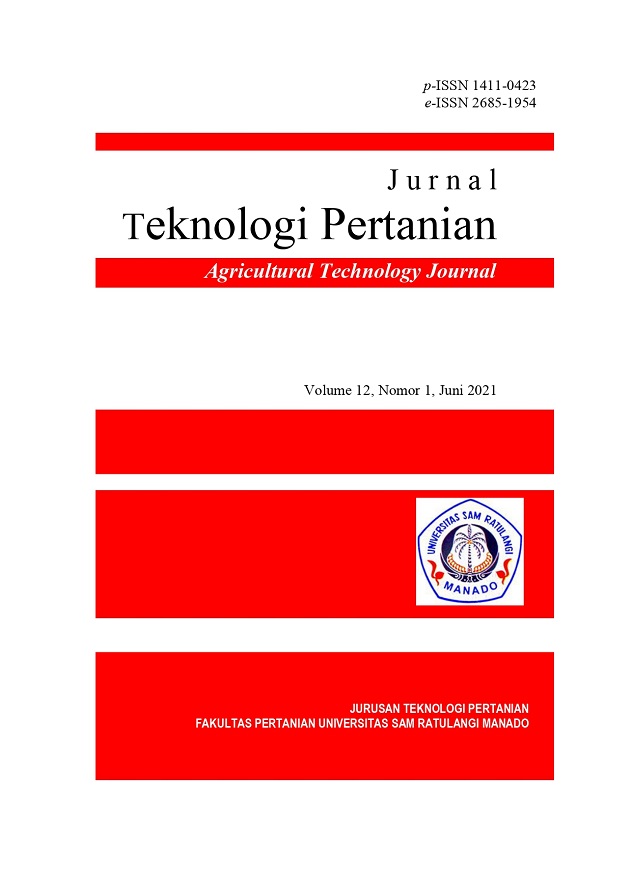PENGARUH KONSENTRASI SUKROSA PADA FERMENTASI SARI BUAH PEPAYA (Carica papaya L)
DOI:
https://doi.org/10.35791/jteta.v12i1.53270Keywords:
fermented drinks, papaya, sucrose, alcoholAbstract
Utilization of the hawaiian papaya fruit or the local name “bird papaya” which is processed into fermented drinks (fruit wine) is one way to increase the added value and usefulness of the papaya fruit. One of the alternative processing technologies for papaya fruit by cooking "Overripe" which has the potential to be developed is the manufacture of fermented papaya fruit drinks obtained by fermentation. The production of fermented drinks can be done through the alcoholic fermentation process of papaya juice. This fermentation process can run with the help of microbes, in this case a Sacharomyces cerevisiae yeast that converts carbohydrates or sugars into alcohol. The purpose of this research was to determine the optimum sugar concentration in the fermentation process of papaya juice, to analyze the alcohol content of the fermented papaya juice drink and to observe the length of fermentation with indicators of CO2 production during fermentation. Based on the results of the study, it can be concluded that the papaya juice fermented drink with 25% sucrose concentration is the most preferred treatment in terms of taste while the most preferred aroma is 15% sucrose concentration, containing the optimum sugar content for papaya fruit juice fermented drinks resulting in the highest sugar content, namely 7.17̊ Brix The alcohol content produced is in accordance with the quality standards of fermented drinks, namely 5 - 15%, obtained in the 25% treatment with an alcohol content of 8.83% in the fermentation time of 6 days.
Keywords: fermented drinks, papaya, sucrose, alcohol
References
Kalie, M.B., 1996. Bertanam Pepaya. PT. Penebar Swadaya Jakarta.Karmana, O., 2006, Cerdas Belajar Biologi, Jakarta, Grafindo.
Kwartiningsih, Endang, Mulyanti, Ln. (2005). Fermentasi Sari Buah Hati Nanas (Ananas comosus) Menjadi Vinegar. Jurusan Tehnik Kimia Fakultas Tehnik, UNS.
Matu, I., 2004. Variasi Konsentrasi Sukrosa Dan Lama Fermentasi dalam Pembuatan Anggur Buah Pepaya, Skripi. Universitas Sam Ratulangi Manado.
Presscot, S,C., dan G.G. Dunn, 1959. Industrial Microbiology. Mc Graw Hill Book Compeny Inc,New Yok. Hal 473. Sa’id. E. G. (1987).
Wijono, D., B. Haryono dan Sarjono. 1983. Kinetika Mikrobia dan Fermentasi. Materi Training. Fakultas Teknology Pertanian UGM.



 Journal Template
Journal Template


